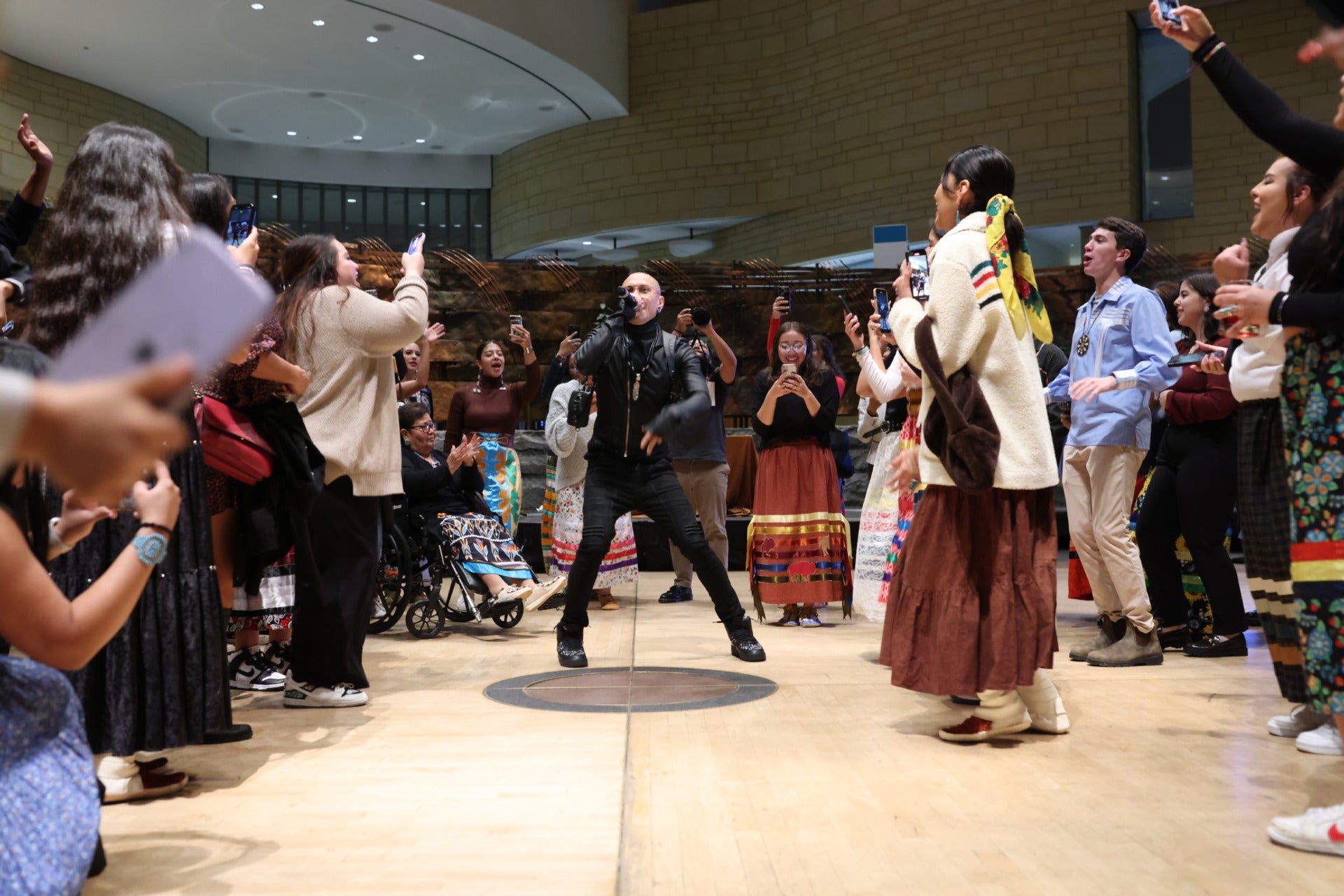The stories of Native Americans have too long been written by outsiders who did not understand the culture. That crucial point by US Representative Deb Haaland of New Mexico appears at the start of a new report by the Center for Native American Youth (CNAY). As she writes to Native youth in the Aspen Institute program’s 2019 State of Native Youth Report, Haaland promises that “We can ensure that Native voices and leadership shape our own narratives.”
To ensure that those voices are heard, the CNAY report includes glossaries at the end of each chapter. While many of the included terms seem familiar, many have precise meanings, or may need to be disabused of some casual imprecision after years of misuse.
This glossary should be a primer for anyone — in policy, media, or simply general conversation — who wishes to discuss the issues facing Native populations today. Please see the full report for citations.
American Indian (AI)/Alaska Native (AN)
As used in the United States Census, an American Indian/Alaska Native is a person “having origins in any original peoples of North and South America (including Central America) and who maintains cultural identification through tribal affiliation or community recognition.” This term is often used in reference to collected data about the population.
Center for Native American Youth (CNAY)
The Center for Native American Youth (CNAY) is a national advocacy organization working to improve the health, safety, and overall well-being of Native American youth ages 24 and under. Founded by former US Senator Byron Dorgan, CNAY is a policy program within the Aspen Institute, headquartered in Washington, DC. While a part of the Aspen Institute, CNAY is also overseen by a Board of Advisors. CNAY strives to bring greater national attention to the issues facing Native American youth while fostering community-driven solutions, with special emphasis on youth suicide prevention.
Generation Indigenous (Gen-I)
A cross-sector initiative launched by President Obama in 2014 to focus on strengthening resources for Native youth and building new platforms where they can share their voice, recognize one another, and inspire positive change. As part of the initiative, CNAY manages the National Native Youth Network of Gen-I. For more information about the Gen-I Network, visit www.cnay.org.
Indian Country
Indian Country legally refers to “(a) all land within the limits of any Indian reservation under the jurisdiction of the United States Government, notwithstanding the issuance of any patent, and, including rights-of-way running through the reservation, (b) all dependent Indian communities within the borders of the United States whether within the original or subsequently acquired territory thereof, and whether within or without the limits of a state, and (c) all Indian allotments, the Indian titles to which have not been extinguished, including rights-of-way running through the same.”
Indian Reservation
An Indian Reservation “is an area of land re-served for a tribe or tribes under treaty or other agreement with the United States, executive order, or federal statute or administrative action as permanent tribal homelands, and where the federal government holds title to the land in trust on behalf of the tribe.”
Native American
Native American refers to “all Native peoples of the United States and its trust territories.” This includes American Indians, Alaska Natives, Native Hawaiians, Chamorros, American Samoans, and U.S. residents from Canada First Nations and indigenous communities in Central and South America. For the purposes of CNAY, Native American refers to any self-identifying individual of indigenous ancestry in the Americas.
Native Food Sovereignty
Native food sovereignty refers to “the right of American Indians, Alaska Natives, and Native Hawaiians to produce their own traditional foods on their own lands to sustain themselves, their families and their communities.”
Sacred Site
Sacred Site refers to “any specific, discrete, narrowly delineated location on Federal land that is identified by an Indian tribe, or Indian individual determined to be an appropriately authoritative representative of an Indian religion, as sacred by virtue of its established religious significance to, or ceremonial use by, an Indian religion; provided that the tribe or appropriately authoritative representative of an Indian religion has informed the agency of the existence of such a site.”
Traditional Ecological Knowledge
Traditional Ecological Knowledge is “a cumulative body of knowledge, practice and belief evolving by adaptive processes and handed down through generations by cultural transmission, about the relationship of living beings (including humans) with one another and with their environment.”
Tribal Consultation
Tribal Consultation “is a process that aims to create effective collaboration with Indian tribes and to inform Federal decision-makers. Consultation is built upon government-to-government exchange of information and promotes enhanced communication that emphasizes trust, respect, and shared responsibility.”
Tribe
Tribe, otherwise called a “federally recognized (Indian) Tribe,” refers to any American Indian or Alaska Native tribal entity with a government-to-government relationship with the U.S. that is entitled to federal trust obligations. There are currently 567 federally recognized tribes in the United States. Each tribe is distinct, with its own culture, traditions, language, and community. CNAY, however, also represents state-recognized tribes and tribes not recognized by state or federal governments. When using the word tribe in our work, we are referring to all tribes in the United States unless specifically outlined as a federally recognized tribe.
Trust and Treaty Obligation
Trust and Treaty Obligation refers to the federal government’s responsibility “to protect tribal treaty rights, lands, assets, and resources, as well as a duty to carry out the mandates of federal law with respect to American Indian and Alaska Native tribes and villages.”

